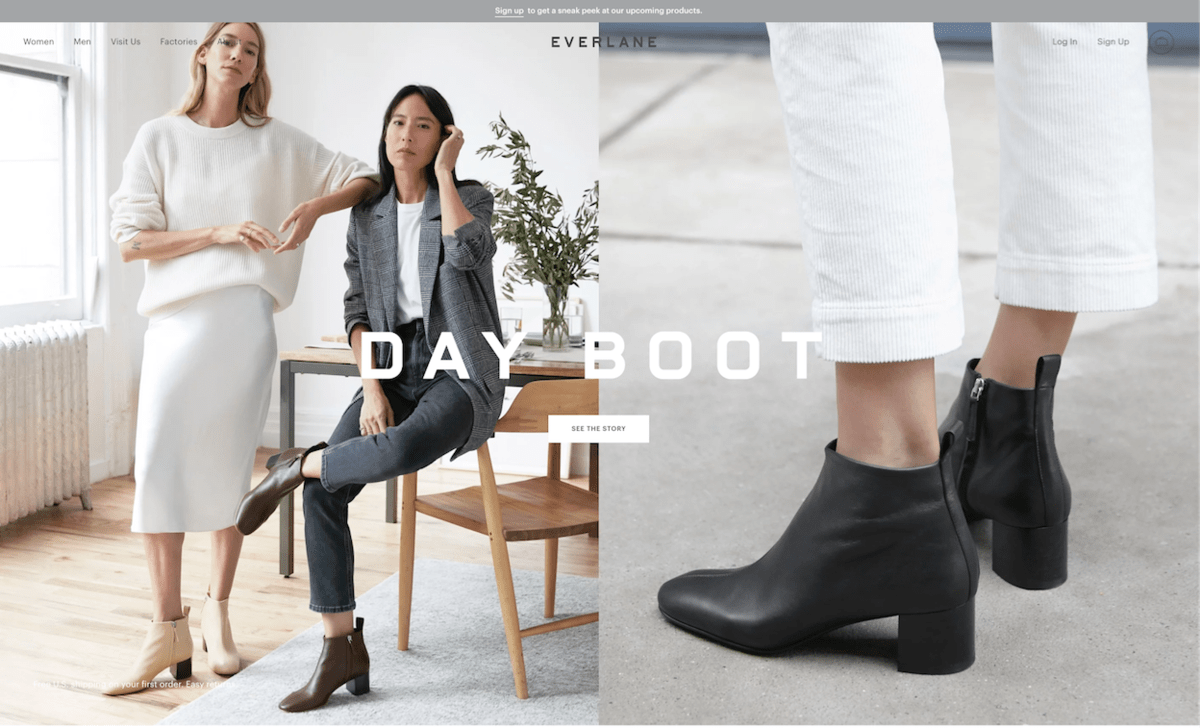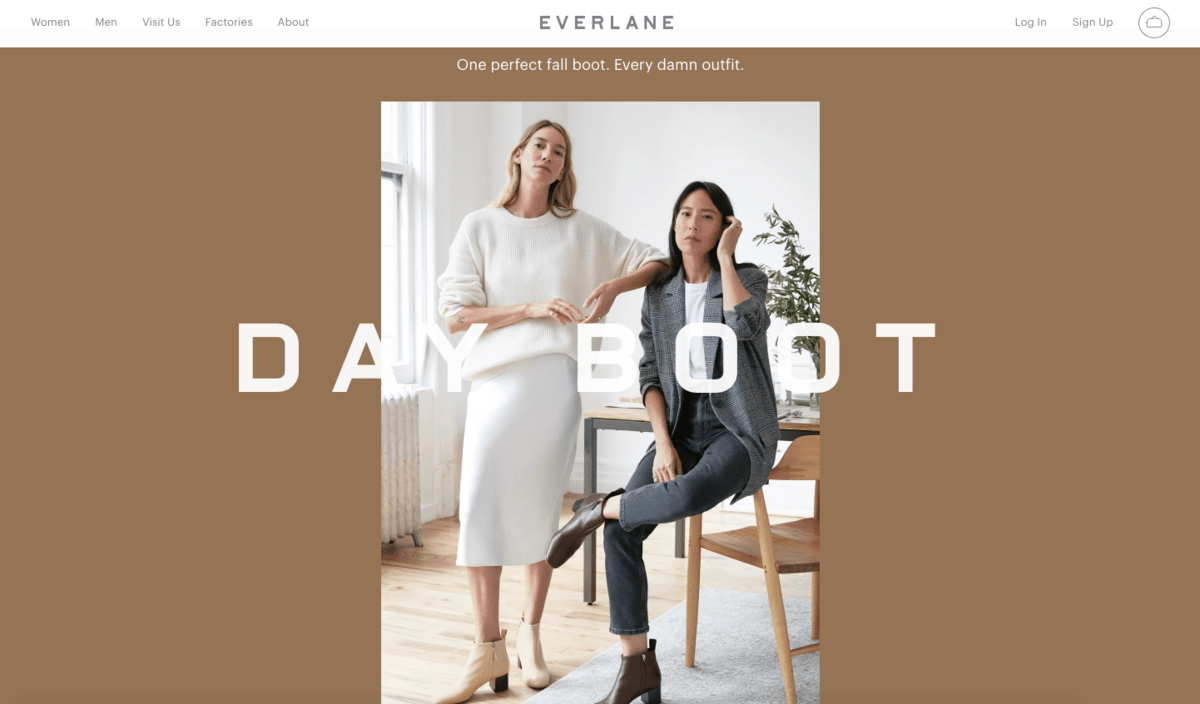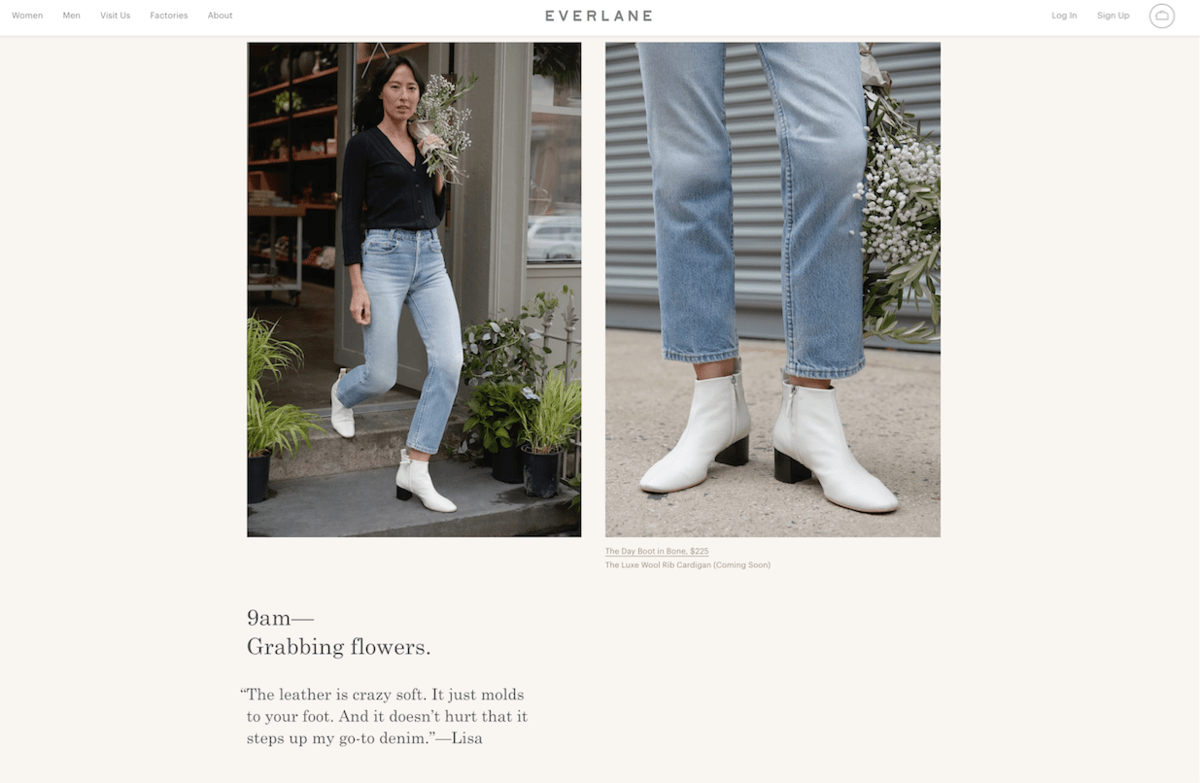Share
A Time-Based Content Strategy: Evergreen vs. Real-Time
Content creation can be considered along a time continuum. Learn how brands like Everlane approach an evergreen vs real-time content strategy.

Content marketers often think about developing content around topics, and then consider how channel-specific output might be developed and deployed. For example, a retail brand might build an editorial campaign around sustainability. The brand might publish a long-form piece on their blog, a video on YouTube, a poll on Facebook, and get a PR mention in a trade magazine. This is a great strategy to build large ground cover around a campaign topic.
But content creation can also be considered along a time continuum. Evergreen content in the digital age, for example, is content that seemingly has no expiration date, builds SEO, and might actually increase view velocity over time. Building on the sustainability example from above, marketers might create an evergreen piece entitled “How is cotton sustainably farmed?”
It’s about time
Whereas we often consider evergreen pieces in our content mix, marketers are less likely to consider real-time content as a valuable storytelling form on the other end of the time spectrum. Because producing evergreen content requires topics with longevity, pieces tend to be anodyne in nature: a top ten list, a how-to, or a historical survey.
Real-time content has energy and excitement about it. Consider an Instagram Story that disappears after 24 hours, in which you see your friend dining at a fabulous restaurant after taking a sunset dip in the ocean. It’s a viscerally different experience than reading an article about the same destination in a travel guide written in the distant past.
A live tweet during a sporting event, a festival, or an extreme weather event can have that same raw appeal whereby the audience feels like they are experiencing something in real time even if they aren’t physically there.
As with any content marketing, the success depends on identifying your intended audience and making sure you have effective channels to reach them. It would be difficult to reach people in real time if you have no followers on Instagram or Twitter – two platforms that are well-suited for real-time storytelling.
But if you have cultivated audiences on multiple platforms, you can build better engagement by delivering content that is optimized for those platforms and the constituencies that use them.
Build time-based content into your campaigns
Not every campaign requires or is appropriate for real-time storytelling. But you’re likely to have a couple of initiatives during the course of the year (events are ideal opportunities) that are worth testing a real-time storytelling approach. Instagram Stories provide a low-cost, low-effort way to test a real-time approach, and because there’s a certain kitchiness to its features (e.g. Superzoom, Boomerang, Barbara Kruger-style typography), it can also be a forgiving way to learn since the stories expire after 24 hours.
Real-world example
Online clothing retailer Everlane has built their brand around transparency and sustainability. Their frequent product launches give them a lot of opportunity to experiment with both traditional and real-time storytelling for their product launches. Here’s how they approached the launch of their Day Boot.
Hero graphic on homepage. Brands have to work very hard to get customers to visit their website. Once they arrive, you can’t waste an opportunity to capture their attention and direct them to the next call-to-action (e.g. “See the Story”).

Editorial content on website. The editorial content allows the brand to control the messaging and provides visuals that conform to the company’s look-and-feel. The page also helps build SEO and acts as evergreen content for their footwear products.
Video allows for embeds. Media sites love video content because it increases time-on-site for their visitors. Everlane has produced video content for other product launches have have gained in excess of 1 million views. This evergreen video content is fantastic “discovery” content.
You heard it first on Twitter. In advance of the actual launch, Everlane tweeted a link to allow consumers to purchase the shoe. This type of advance notice also incentivizes customers to follow their Twitter feed. Gaining your audience’s attention on multiple channels increase conversion potential.
The Day Boot hasn’t launched yet but we have a secret link. Starting now you have 15 hours to shop the Day Boot before anyone else.https://t.co/QH3nBma2pw pic.twitter.com/FohtBdx0G4
— Everlane (@Everlane) September 10, 2018
Media coverage. More traditional media outlets help amplify the message to customers who might not be aware of the product or the brand. The Day Boot was covered by New York Magazine’s fashion blog, The Cut.

Real-time excitement. Using Instagram Stories, Everlane allowed customers to ask questions about the product as a part of their Transparency Tuesday series. Everlane used smartphone captured video to provide a more authentic look at the product.
Everlane used multiple channels and voices to speak to its constituents. The use of real-time content provided excitement and urgency in a way that the more staid editorial-style content did not. It’s a great example of a contemporary marketing effort around a product launch.
For a deeper look at how brands are navigating demands for real-time visual storytelling, download our guide Real-Time Workflow 2.0: The Guide to Faster Visual Storytelling.




